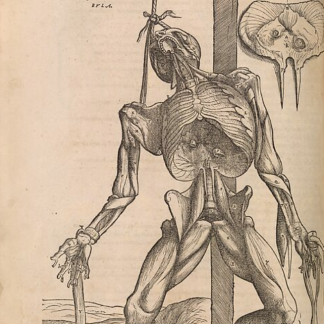The Hand That Knows:
Epistemology and Picturing in Early Modern Anatomy
Annenberg School, Room 110

First printed in 1543, Andreas Vesalius’s De humani corporis fabrica challenged centuries of assumptions about human anatomy. One reason that the book was so persuasive to generations of physicians and anatomist was that the beautiful, folio-sized plates depicting the dissected body established the very idea of a normative canon of knowledge. Presenting an ideal composite of observations taken from interactions with multiple bodies, the plates embody a Renaissance episteme that Lorraine Daston and Peter Galison have called “truth-to-nature.” This approach to representation remained hegemonic until it was challenged first by the Dutch anatomist and surgeon, Govard Bidloo, in the late 17th century, and then by the English man-midwife, William Hunter, in the 18th century. Bidloo and Hunter rejected the very idea of the normative picture and instead published anatomical pictures that focused on the individuated act of dissection and on the hand, as-it-were, of the anatomist himself. This lecture will explore how and why this shift from the normative to the manual illuminates aspects of the relationship between picturing and vision in early modern science.